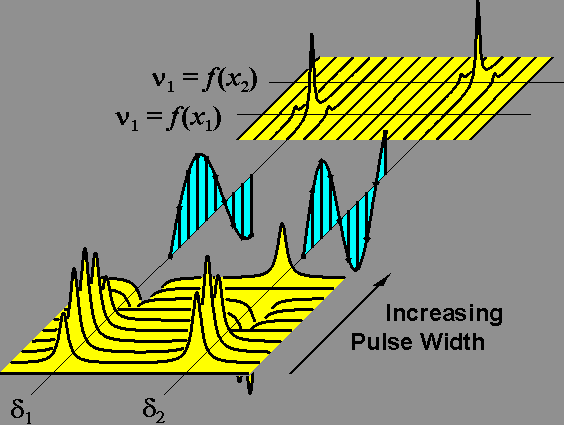|
|
|

Figure: One dimensional rotating-frame images are obtained from a set of NMR spectra collected with incrementally increasing pulse width (lower yellow plot). The amplitude modulated spectra, where the modulation frequency ist the nutation frequency (cyan plot), are converted (by a second real Fourier transformation) into a two-dimensional plot revealing spectral information in the one and spatial information in the other dimension (upper yellow plot). If the dependency of nutation frequencies on the spatial dimension is known, the locations of NMR-active nuclei can be calculated. |
(The nutation of magnetization instead of the Larmor precession is used as the imaging parameter)
|